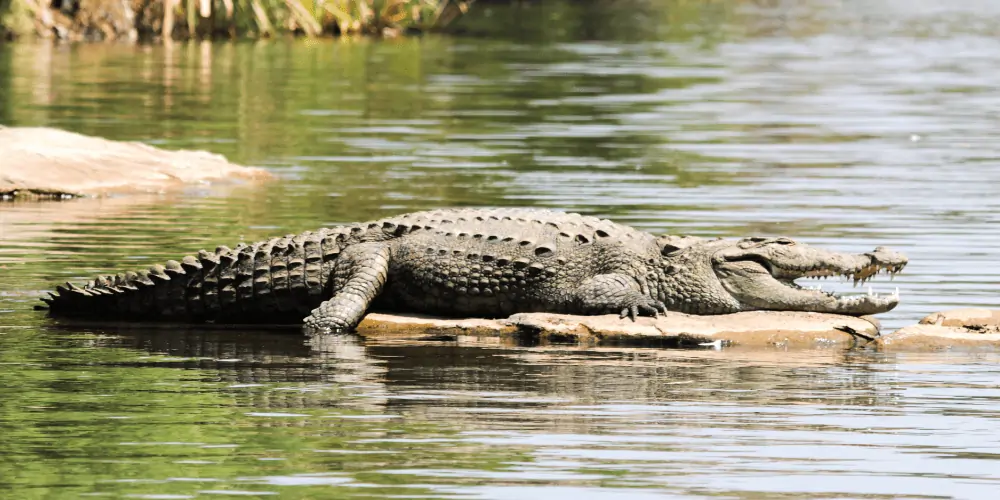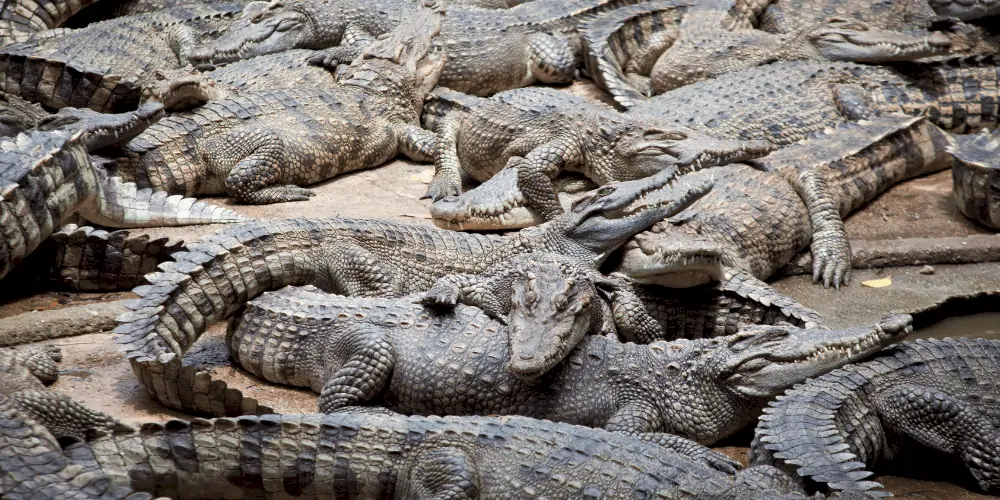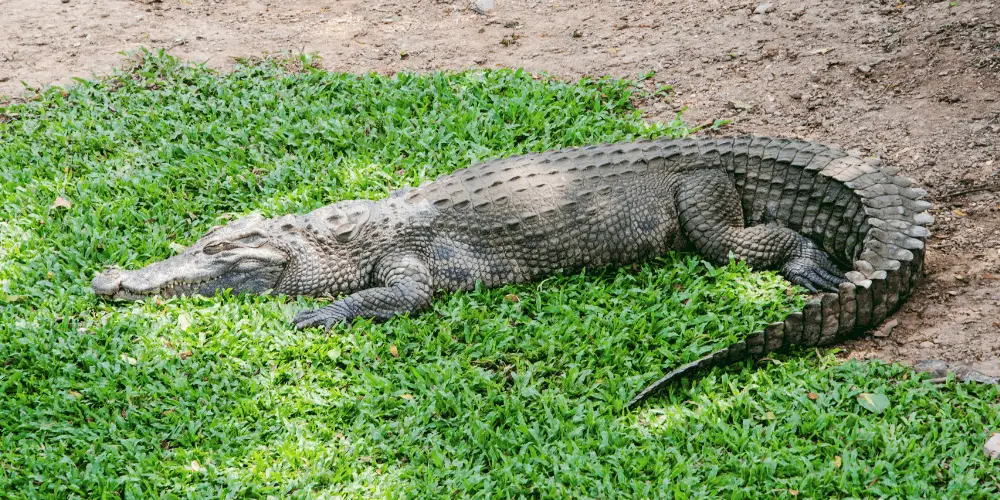Crocodiles are animals that have dominated their respective spheres for millions of years, ruthless predators that are expert killers and adept at survival.
They’ve even been around as long as the dinosaurs but have outlived them.
So, what could be the secret to their expert survival tactics? Could it have to do with how long they can go without eating?
On average, crocodiles can last up to a year without eating a meal, with larger specimens that can last even longer. Because a crocodile’s metabolism is super-efficient, their bodies can use and store nearly every last bit of their food.
Even with a super-efficient metabolism, a year seems too long to go without eating, right?
But how can this be?
In this article, we will take a closer look at how crocodiles can do this, so keep reading to learn everything you need to know about how long crocs can go without eating.
How Do Crocodiles’ Metabolisms Work?
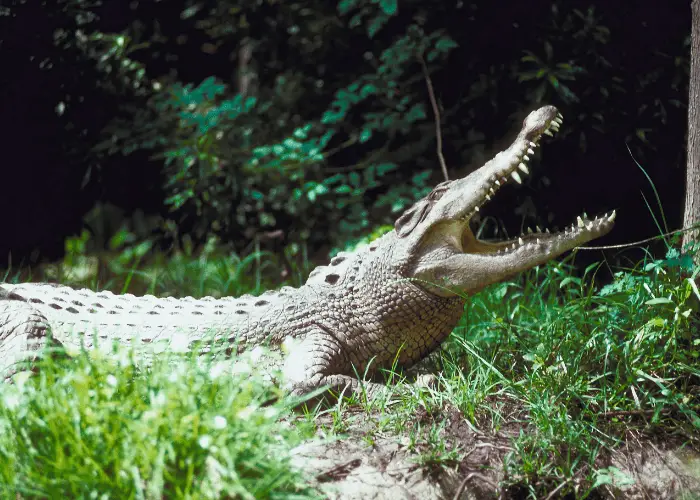
Crocodiles are highly efficient when it comes to metabolizing the food they eat. Their digestive systems work very slowly compared to a mammal or other animals.
Pair this with the crocodile’s ability to “power down” their metabolism, and it suddenly starts to make sense that they can go months or even up to a year without eating a single thing.
When a group of crocodiles consumes their prey, they typically will eat it whole. That means if they catch a deer by surprise while drinking from the edge of a stream, a crocodile will normally swallow the deer whole without chewing.
This is partly because crocodiles don’t have the mandibular dexterity to chew, meaning the muscles in their jaws are purely for clamping down with extreme force. Instead of chewing up their prey, they swallow it.
Once the prey has been swallowed, the crocodile’s digestive system will break it down slowly over time.
Every digestible part of the animal will be broken down and used for energy and nutrients.
At the same time, the bones and skin typically remain inside the croc for long periods and are crushed and compacted down until they can be ejected as waste.
Because of this, crocs can extract huge caloric content from their prey, and their bodies are adept at storing it.
This energy and nutrient content can be stored in the croc’s body for long periods if required, only used when needed.
RELATED ARTICLE: Do Crocodiles Have Tongues?
Crocodiles Are Cold Blooded
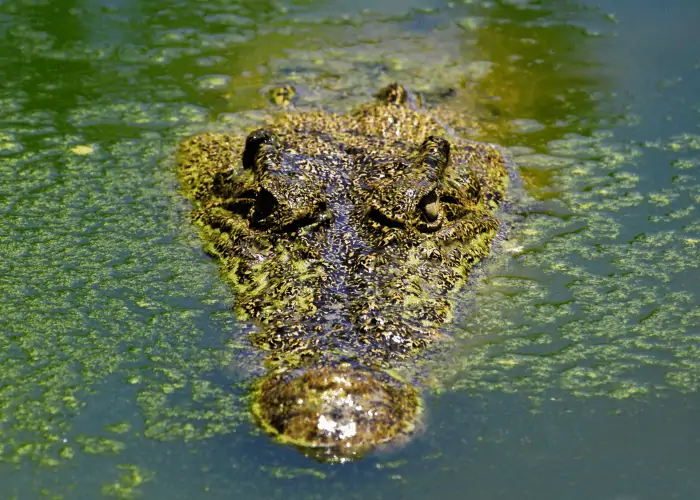
Another contributing factor to the crocodile’s ability to last so long without food is that they are cold-blooded.
Cold-blooded animals require much less energy to maintain their metabolisms and body heat levels. In contrast, warm-blooded animals need up to 70% of their energy to keep these at a time.
Crocodiles can essentially “power down” their metabolisms when food is scarce, meaning they will only expend the necessary energy to perform the most basic survival functions.
They may lay in the same spot for hours or days to conserve energy, relying on the sun for heat and the shade to cool themselves off.
Crocodiles don’t have to worry about expending caloric energy to keep their bodies warm, which makes their food last much longer in their bodies.
As crocodiles engage in this powered-down mode, they appear sluggish and unresponsive in most circumstances.
However, if they detect a nearby threat, they will still have enough energy to protect themselves or catch prey if something wanders close to their hiding spot.
Crocodiles Eat High-Energy Food

Another reason Crocs can last so long without food is that the food they eat, typically warm-blooded animals, is a very high-energy food source.
Grazing animals like deer, wild ox, cows, or other herbivores typically have high fat and muscle content, making them very high-energy food sources.
With high-energy food sources, the crocodile can store all the energy from them for later use.
In many animals with less efficient metabolisms, much of this energy would go to waste or be burned to maintain body heat. But crocodiles don’t need that, as they are cold-blooded.
Crocodiles can conserve energy for months by laying still in one spot, only moving to sunny areas to get warm.
As soon as prey ventures too close, which will likely be another high-energy food source like an herbivore grazer, they can replenish their energy stores and last longer.
When Do Crocodiles Need to Conserve Energy Most?

The time of the year when food is most scarce is winter. During the long winter, much of the prey crocodiles enjoy in warmer seasons move away to warmer areas or don’t venture to the same water sources anymore, as they may be frozen over.
This will often force crocodiles to go into their powered-down mode and wait for the return of spring when prey will once again be abundant and easy to catch.
Some larger specimens of crocodiles have even been known to last over a year without food. This is because the larger the crocodile, the more energy it can store in their bodies.
Final Thoughts
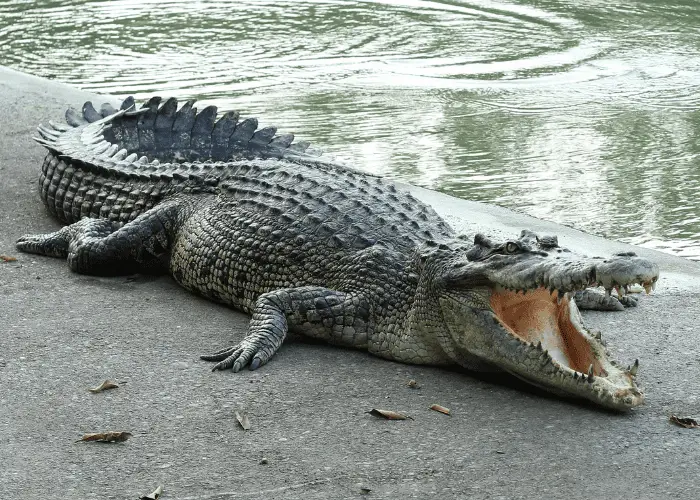
Crocodiles are excellent predators.
They even outlasted the mighty dinosaurs, making them some of the oldest living species of animals today. Having been around for millions of years, you may wonder what has made them such efficient survivors for so long.
One of their secrets is how long they can go without food. Some Crocs can last months or even up to a year or longer without eating food. This is due to their highly efficient metabolisms and the high energy content of their prey.
We hope the information outlined in this article has answered all your questions about how long Crocs can go without eating.
Remember to check out our other articles BELOW for more information on these animals!
- Can Crocodiles Regrow Limbs?
- Can Alligators and Crocodiles Climb Trees?
- Can Crocodiles Feel Pain?
- How Fast Can a Crocodile Run?
- What is a Group of Crocodiles Called?
REFERENCES:
- Campbell, H. A., Sullivan, S., Read, M. A., Gordos, M. A., & Franklin, C. E. (2010). Ecological and physiological determinants of dive duration in the freshwater crocodile. Functional Ecology, 24(1), 103-111. https://doi.org/10.1111/j.1365-2435.2009.01621.x
- Grigg, G. C., & Kirshner, D. (2015). Biology and Evolution of Crocodylians. Cornell University Press. https://www.degruyter.com/document/doi/10.7591/9781501702375/html
- Kay, W. R. (2004). Movements and home ranges of radio-tracked Crocodylus porosus in the Cambridge Gulf region of Western Australia. Wildlife Research, 31(5), 495-508. https://doi.org/10.1071/WR02074
- Seebacher, F., & Franklin, C. E. (2005). Physiological mechanisms of thermoregulation in reptiles: a review. Journal of Comparative Physiology B, 175(8), 533-541. https://doi.org/10.1007/s00360-005-0020-9
- Tucker, A. D., Limpus, C. J., & McCallum, H. I. (1997). Digestive efficiency and protein turnover in estuarine crocodiles (Crocodylus porosus): influence of age and diet. Australian Journal of Zoology, 45(3), 239-247. https://doi.org/10.1071/ZO97020

